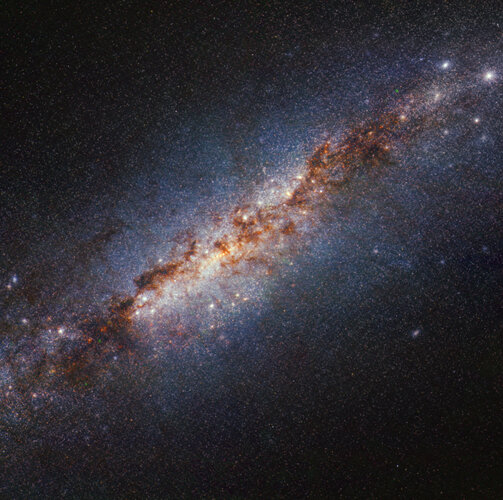
Looking at M82 in slightly longer infrared wavelengths, clumpy tendrils represented in red can be seen extending above and below the plane of the galaxy. These gaseous streamers are a galactic wind rushing out from the core of the starburst.
One area of focus for this research team was understanding how this galactic wind, which is caused by the rapid rate of star formation and subsequent supernovae, is being launched and influencing its surrounding environment. By resolving a central section of M82, scientists have been able to examine where the wind originates, and gain insight into how hot and cold components interact within the wind.
Webb’s NIRCam instrument was well suited to tracing the structure of the galactic wind via emission from sooty chemical molecules known as polycyclic aromatic hydrocarbons (PAHs). PAHs can be considered as very small dust grains that survive in cooler temperatures but are destroyed in hot conditions.
Much to the team’s surprise, Webb’s view of the PAH emission highlights the galactic wind’s fine structure – an aspect previously unknown. Depicted as red filaments, the emission extends away from the central region where the heart of star formation is located. Another unanticipated find was the similarity between the structure of the PAH emission and that of the hot, ionised gas.
“It was unexpected to see the PAH emission resemble ionised gas,” said Alberto. “PAHs are not supposed to live very long when exposed to such a strong radiation field, so perhaps they are being replenished all the time. It challenges our theories and shows us that further investigation is required.”



